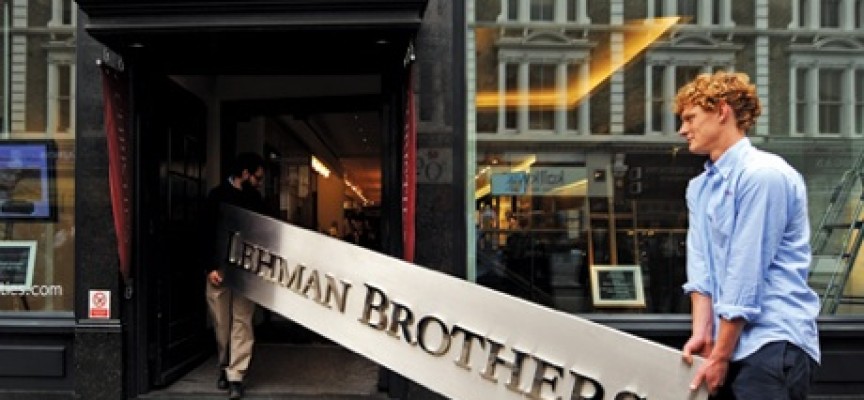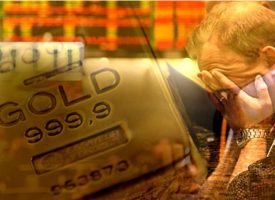On the heels of another wild day of trading in global markets, today one of the legends in the business includes a guest commentary about a trigger that has the possibility of sending the world hurtling headlong into the next major financial crisis.
By Art Cashin Director of Floor Operations at UBS
December 10 (King World News) – “On this day in 1896, the boys at Wesleyan University in Connecticut decided to challenge those guys over at Yale to an official game under the rules set up by James Naismith up in MA just four years before. Naismith, who had been challenged to find a game to fill up the wintry lag after baseball and football, developed an indoor game.
In his version players moved a ball from their side of play to the opponents' and then tried to score a goal. Since it was indoors, kicking a goal was impractical (although kicking an opponent was in). To verify the goal a team had to put the ball in a basket on the wall. And, worse yet they literally then had to wait until somebody got a ladder and retrieved the ball from the basket.
So, in a game that looked more like Rugby with splinters, Wesleyan beat Yale, 4 to 3, in the first collegiate basketball game ever. The 14 men (there were then seven on each side) retired to the tables down at Mory's.
To celebrate slam dunk a couple of deep dish olive pies while explaining to someone that inflated sneakers or inflated expectations are hardly enough to guarantee success.
We didn't see anyone pumping up their sneakers Tuesday, but there were a couple of serious attempts to pump up the market.
And A Little Child Shall Lead Them….Or Is It Little Stocks? – Stocks rebounded smartly yesterday and much of the media chalked it up to the "buy the dip" crowd. While part of that is true, the whole picture was a bit more complicated.
Traders in the U.S. arrived Tuesday morning to see blood around the globe. Shanghai was down the equivalent of 960 points in the Dow. Greece was down the equivalent of 2000 points – its worst fall since the crash of '87. Other markets were generally off the equivalent of 300 points or more.
With that as backdrop, U.S. stocks opened sharply lower but nowhere near the extremes of other markets.
U.S. stocks regrouped before the echo of the opening bell had faded and began to rally into 10:00.
About 15 minutes later, I sent out this note:
As 10:30 nears, they roll over to retest intra-day lows.
Strong suggestion that some of the selling may be coming from offshore, since the run rate of the first hour projects over a billion shares. We'll see if it slows as Europe closes circa 11:30 (EST).
On the rollover, a divergence evolved. The Russell refused to go back to its opening lows. In fact, it dipped slightly and then began to rally again. It would turn out to be the best performer of the day.
The Russell strength may have benefitted from stabilizing crude. There are many small energy stocks in the Russell.
Shortly before noon, I sent this follow-up:
They broke the post-opening lows on the 10:30 retest but that produced no trapdoor follow-through.
As the European close neared, selling pressure seemed to ease as did the run rate. I will calculate after noon when Europe influence dissipates a bit.
The Dow and S&P showed little instant reaction to the European close. Shortly after noon, I sent this note:
Bulls failed to mount any meaningful rally after Europe closed.
Run rate at 12:15 projects to an NYSE closing volume of 810/890 million shares down from better than a billion indicated in the first sixty minutes.
(The final volume on the NYSE was 833 million shares.)
While I and many others were puzzling about the direction of the Dow and S&P, the real game was in the Russell, which continued a staircase rally through the day, taking it smartly back into plus territory and positively influencing the Nasdaq.
By the markets close, the Russell was solidly higher and challenging Monday morning's high. Quite an impressive performance.
Another Pair Of Eyes – My good friend, Peter Boockvar, over at the Lindsey Group put out a very thorough note on markets this morning. Here's a bit on Europe:
European stock markets are modestly rebounding from yesterday’s sell off but Greece again is the problem due to its political concerns. After jumping by 93 bps yesterday, the Greek 5 yr CDS is spiking by another 115 bps to 950 bps, the highest since October ’13 (though remains a fraction below the default concerns in 2012). The 3 yr Greek yield was up by 182 bps yesterday and is higher by 108 bps today to 9.38%. It was 6.44% one week ago. The 10 yr yield is up by 33 bps to 8.51% after the 94 bps jump Tuesday. The Athens stock market is down another 1.7% after plunging by almost 13% yesterday. Greece in itself should be a non event for the rest of us but there is a 2nd day of selling in the peripheral debt of Italy, Spain and Portugal. Spain’s 10 yr yield is up 8 bps over the past two days while Italy’s up by 13 bps and Portugal’s 10 yr is higher by almost 20 bps.
You still need a microscope though to see the yields that these bonds ex Greece bring the buyer. Mario Draghi wants to buy a lot of sovereign bonds soon but we have to ask if European banks will sell their holdings to them. The Bank of Italy today said Italian banks own the most amount of Italian sovereign debt in 6 years. The question then is what will these banks do with the money that they collect on a sale to the ECB. Will they lend it out? Hopefully but only if there is demand and good credit borrowers. If not, Italian banks will have to settle for a negative interest rate if they park the money at the ECB. To avoid this penalty and if lending is not attractive, these banks may choose to hold on to their bonds. We’ll see and while Draghi will likely have plenty of support for sovereign QE, we can add ECB governing council member Ardo Hansson from Estonia who is “quite skeptical about the idea of long term, large scale purchases of sovereign assets.” He said he’s “much more comfortable with the idea of looking into the universe of corporate bonds.”
Lastly in Europe, French industrial production in October fell .8% m/o/m, well worse than expectations of up .2% as manufacturing production went negative. On a y/o/y basis, French IP is negative for 8 out of the last 9 months. The overall level of production is 17% below its ’08 peak. Sovereign QE from the ECB is not going to fix this when the French 10 yr yield is already trading at .97%.
Consensus – Futures look lower again this morning but yesterday's rebound was impressive. That should encourage the buy the dip crowd. Also, the bullish seasonals look to kick in again. Nonetheless – stick with the drill – stay wary, alert and very, very nimble.
IMPORTANT – KWN has many more interviews being released today.
© 2014 by King World News®. All Rights Reserved. This material may not be published, broadcast, rewritten, or redistributed. However, linking directly to the blog page is permitted and encouraged.
The audio interviews with John Embry, Gerald Celente, Rick Rule, Bill Fleckenstein, Ben Davies, Greyerz-Turk-Stamm, David Stockman, William Kaye, Dr. Paul Craig Roberts, Andrew Maguire, Eric Sprott, Rick Santelli, John Mauldin and Marc Faber are available now. Other recent KWN interviews include Jim Grant and Felix Zulauf — to listen CLICK HERE.







